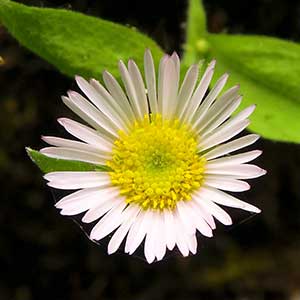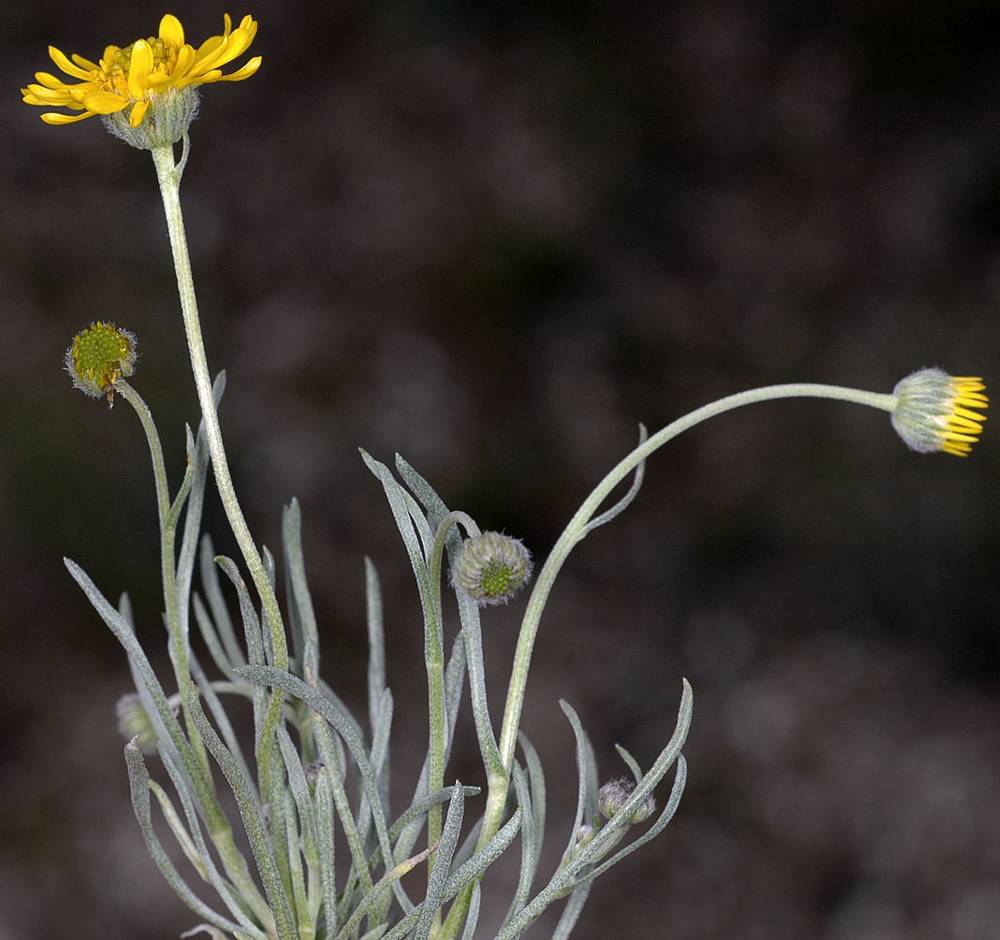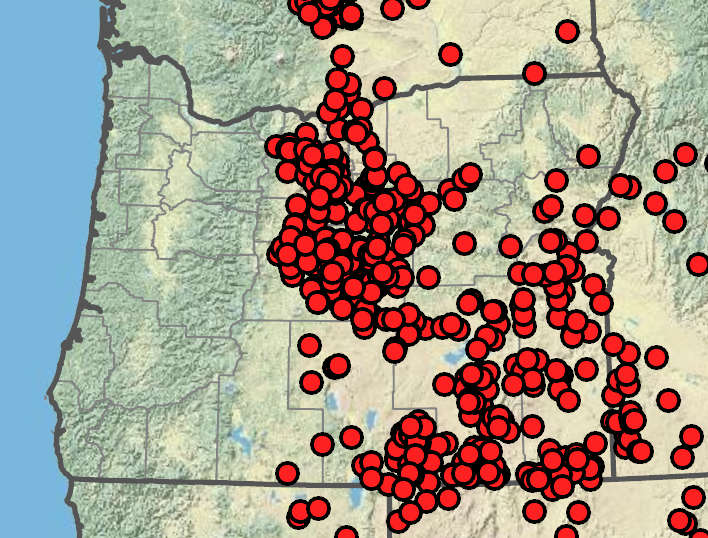Erigeron oreganus
Erigeron linearis
Gorge daisy, gorge fleabane, Oregon fleabane
desert yellow fleabane, lineleaf fleabane
decumbent to erect; hirsute with unequal hairs, sparsely glandular.
erect or basally ascending, moderately to densely strigose, eglandular.
persistent, obovate, 15–90 × 5–20 mm;
margins coarsely serrate to shallowly lobulate;
surfaces sparsely to moderately hirsute to strigose.
persistent, linear to very narrowly oblanceolate, 15–80 × 0.5–2 mm, bases sheathing and light- or white-colored;
margins entire;
surfaces moderately to densely strigose, eglandular.
obovate to elliptic; little or not reduced distally;
surfaces sparsely to moderately hirsute.
linear, 5–20 × 0.5–1 mm, usually reduced distally, bases sheathing.
4–7 × 9–15 mm.
5–8 × 9–13 mm.
30–60, pink to purple;
rays 4–5 × 0.5–1 mm.
20–40, bright yellow;
rays 5–7 × 1–2 mm.
corollas 3–5 mm.
corollas 3–5 mm.
in 2–3 series, pale green with dark green medial stripe;
surfaces remotely hirsute, strongly stipitate-glandular.
in 2–3 series;
surfaces moderately to densely strigose; hirsute, or manicate, minutely glandular.
2–3 mm, moderately strigose;
inner pappi of several unbarbed to weakly barbellate twisted bristles.
2–3 mm, sparsely strigose;
inner pappi of numerous barbellate bristles.
1–4, radiate.
1(2), radiate.
=18, 27, 36, 45.
Erigeron oreganus
Erigeron linearis
Shady cliffs, rocky slopes, crevices. Flowering May–Aug. 100–400 m. Casc. WA. Native.
This uncommon species is found only in the Columbia River Gorge.
Rocky areas, sagebrush, juniper forests. Flowering May–Jul. 200–2500 m. BR, BW, Col, ECas, Lava, Owy. CA, ID, NV, WA; north to British Columbia, northeast to MT, east to WY, southeast to UT. Native.
James Riser, Stephen Meyers
James Riser, Stephen Meyers
- Local floras:
BC,
CA,
OR,
WA
- Local Web sites:
CalFlora,
CalPhotos,
Flora NW,
PNW Herbaria,
Turner Photog.
WildflowerSearch
iNaturalist (observations)
USDA Plants Database
- LBJ Wildflower Center
- SEINet
- Plants of the World Online
- Encyclopedia of Life
- Wikipedia
- Google Image Search





